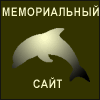| |
International Universities Press.
* Harvey, I. (1987) The wellsprings of deconstruction. In i. Natoli (Ed.),
Tracing literary theory (pp. 127–147). Urbana, IL: University of Illinois Press.
* Homey, K. (1966) New ways in psychoanalysis. New York & London: Norton.
* Jefferson, A. (1986) Structuralism and post-structuralism. In A. Jefferson &
D. Robey (Eds.), Modern literary theory: A comparative introduction (2nd. ed.).
Totowa, NJ: Bames & Noble.
* Jung, C.G. (1963) Memories, dreams, reflections. New York: Vintage Books.
* Jung, C.G. (1967) Symbols of transformation (vol. 5). The collected works of
C. G. Jung. Bollingen Series. Princeton, NJ: Princeton University Press.
* Kaelin.E. F. (1973) The philosophy of aesthetics: A phenomeno-logical
approach. New York: Empire State College.
* Kaplan, S.J. (1975) Feminine consciousness in modern British novel. Urbana,
IL: Illinois University Press.
* Keesey, D. (1987) Contexts/or criticism. Mountain View, CA: May field.
* Kramer, E. (1971) Art as therapy with children. New York: Schocken Books.
* Kramer, E. (1986) The art therapist’s third hand: Reflections on art therapy,
and society at large. The American Journal of Art. Therapy, 24, 71–86.
* Kris, E. (1952) Psychoanalytic explorations in art. New York: International
Universities Press.
* Langer, S. (1978) Philosophy in a new key: A study in the symbolism of reason,
rite, and art. Cambridge, MA: Harvard University Press.
* Lankford, L. (1984) A phenomenological methodology for art criticism. Studies
in Art Education, 25 (3), 151–158.
* Leitch, V.B. (1988) American literary criticism: From the thirties to the
eighties. New York: Columbia University Press.
* Levick, M. (1983) They could not talk and so they drew: Children’s styles of
coping and thinking. Springfield, IL: Charles C Thomas.Levy, B. (1984).
Research into the psychological meaning of color. The American Journal of Art
Therapy, 23 (2), 58–62.
* * Mahler, M. S., Pine, P., & Bergman, A. (1975) The psychological birth of
the human infant. New York: Basic Books.
* Margolis, J. (1987) Robust relativism. In J. Margolis (Ed.), Philosophy looks
at the arts (3rd ed., pp. 485–498). Philadelphia, PA: Temple University Press.
* McNiff, S. (1989) Depth psychology of art. Springfield, IL: Charles C Thomas.
* Moles, A. (1966) Information theory and esthetic perception. (L. E. Cohen,
Trans.). Urbana, IL: University of Illinois Press.
* Natoli, J. (Ed.). (1987) Tracing literary theory. Urbana & Chicago:
University of Illinois Press.
* Naumburg, M. (1953) Psychoneurotic art: Its function in psychotherapy. New
York: Grune and Stratton.
* Plokker, J. H. (1965) Art From the Mentally Disturbed. Boston: Little, Brown.
* Politsky, R. (1990) A comparative analysis of interpretative strategies and
its implications to discipline-based art education. Dissertation Abstracts
International, 51–03A, 0718. (University Microfilms No. DA9022537).
* Prinzhom, H. (1972) Artistry of the Mentally III. New York: Springer-Verlag.
* Rhyne, J. (1991) Fundamentals of art therapy (Review of Fundamentals of art
therapy by Shaun McNiff. American Journal of Art Therapy, 30 (1), 17–18.
* Rubin, J. (1978) Child art therapy: Understanding and helping children grow
through art. New York: Van Nostrand Reinhold.
* Rubin, J. (1984) The art of art therapy. New York: Brunner/ Mazel.
* Rubin, J. (1987) Approaches to art therapy-Theory and technique. New York:
Brunner/Mazel.
* Selden, R. (1989) A reader’s guide to contemporary literary theory (2nd ed.).
Louisville, KY: The University Press of Kentucky.
* Smith, R. A. (1973) Teaching aesthetic criticism in the schools. Journal of
Aesthetic Education, 7, 38–49.
* Stolnitz, J. (1960) Aesthetics and philosophy of art criticism. Boston, MA:
Houghton Mifflin.
* Ulman, E. (1986) Variations on a Freudian theme. The American Journal of Art
Therapy, 24 (4), 125–134.
* Ulman, E., & Dachinger, P. (1977) Art therapy in theory and practice. New
York: Schocken Books.
* Ulman, E., & Levy, B. (1984) Art therapists as diagnosticians. The American
Journal of Art Therapy, 23 (2), 53–54.
* Wadeson, H. (1980) Art psychotherapy. New York: Wiley.
* Wadeson, H. (1987) The dynamics of art psychotherapy. New York: Wiley.
Сведения об авторе:
Эбби Келиш — профессор и директор программы экспрессивной терапии при
Университете Луисвилла (шт. Кентукки, США), автор многочисленных публкаций по
психологии и арт-терапии.
Взято из книги: Арт-терапия в эпоху постмодерна / Под ред. А. И. Копытина. –
СПб.: Речь, Семантика-С, 2002. – С. 15 – 49.
??
??
|
|




